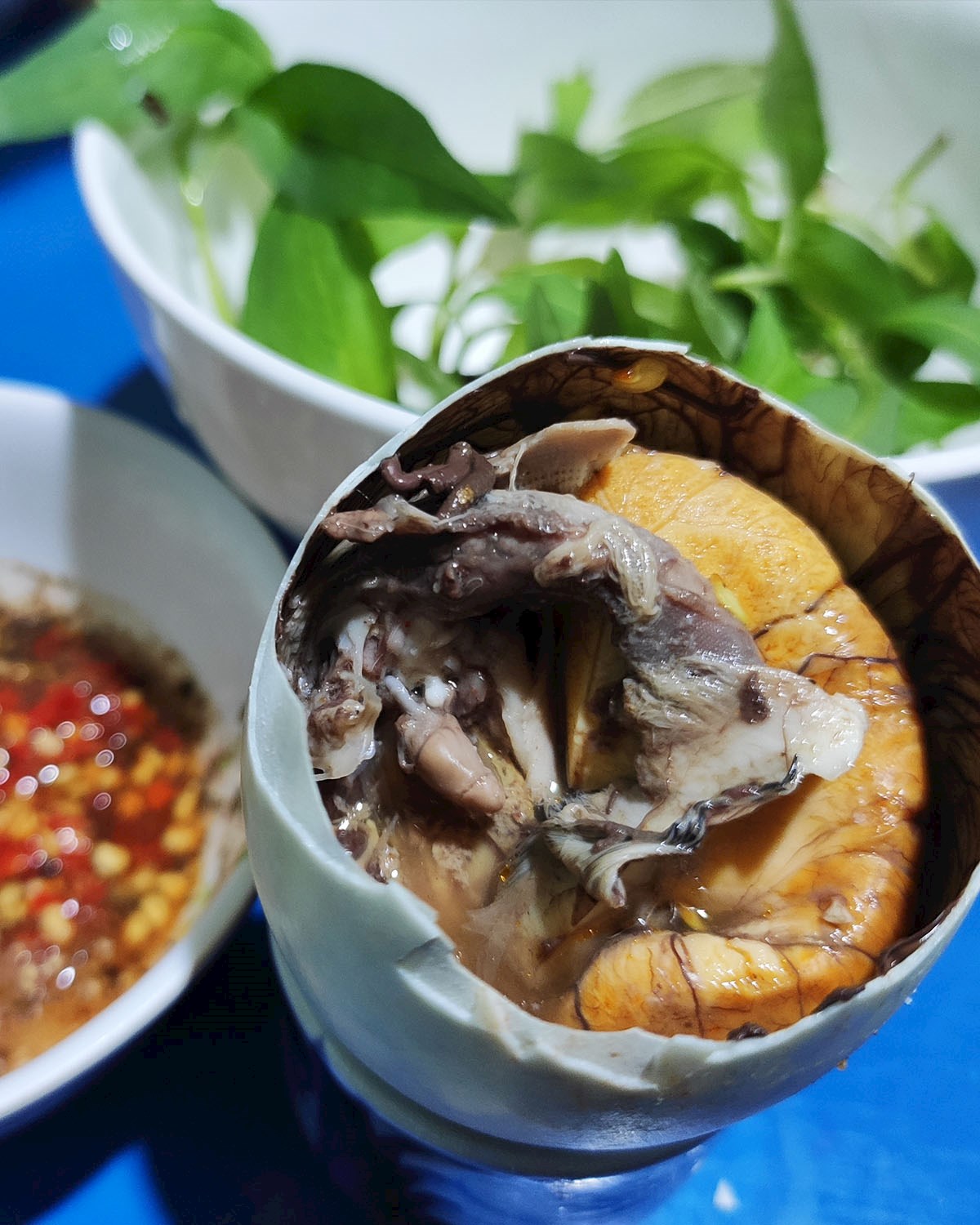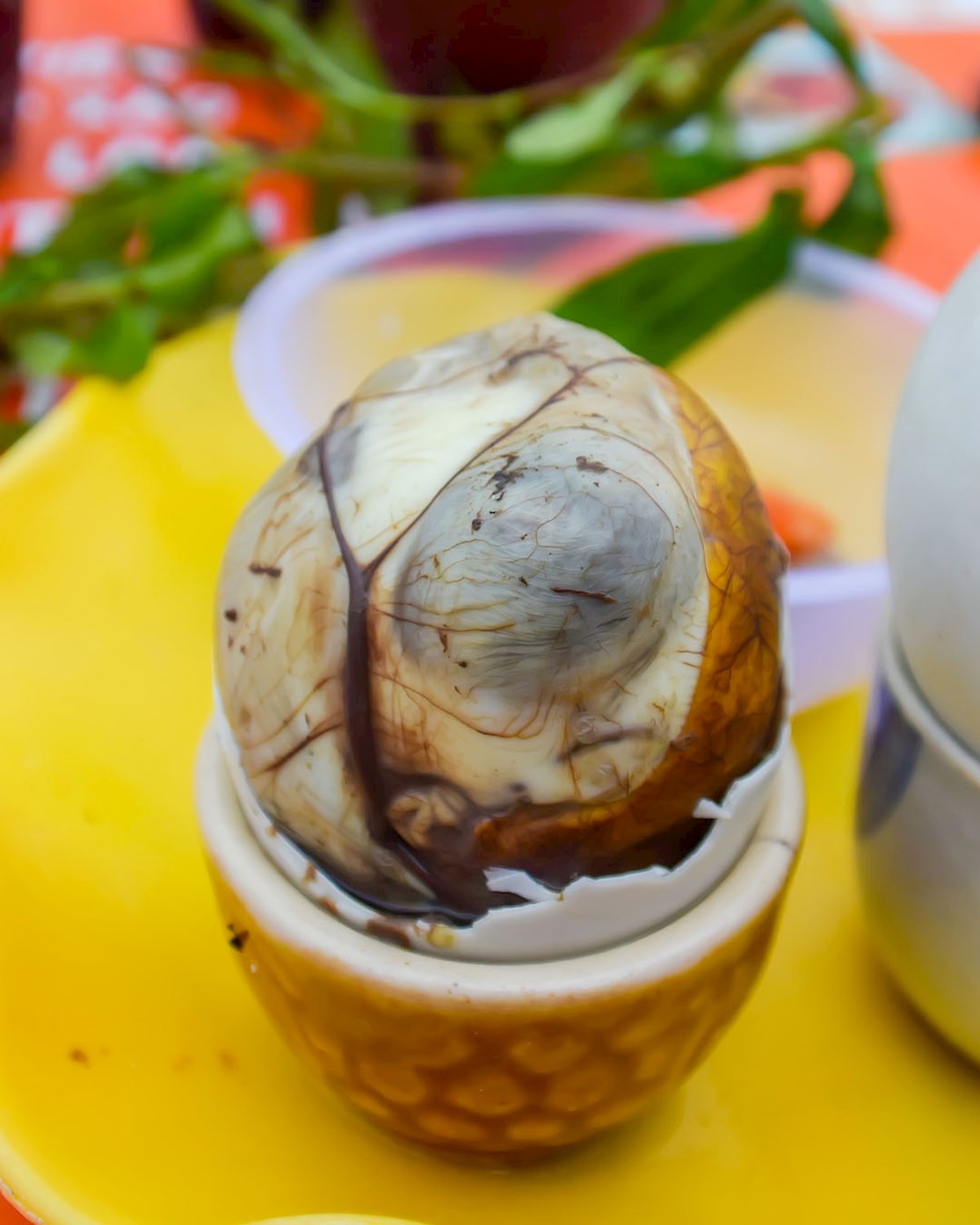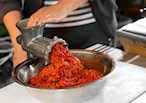Balut, a staple in Filipino street food culture, often captivates the intrigue and apprehension of foreigners with its unorthodox nature. It's a fertilized duck egg, typically incubated for 14 to 21 days, and then boiled. The result is a semi-developed duck embryo, which one can savor along with the yolk and the flavorful broth enclosed within the shell.
 Credits: Shutterstock
Credits: Shutterstock
While some embrace the experience wholeheartedly, diving into the rich, savory flavors and unique textures, others may find the concept challenging to stomach. If you find yourself face-to-face (pun not intended) with this unusual dish, and want to see what all the fuss is, here are some useful tips on how to properly eat it.
1. Procuring the perfect balut
Venture into the streets of the Philippines after sunset and you'll likely encounter a 'magbabalut' (balut seller) peddling this unique snack. Traditionally sold in the evening, these street vendors offer balut eggs warm, ready to be savored. Selecting balut requires little specificity - simply choose an egg, and the adventure begins.
 Credits: Shutterstock
Credits: Shutterstock
2. The art of cracking and peeling
Cracking open a balut is the first step into this culinary journey. Begin by tapping the rounded end of the egg gently against a surface to crack the shell. Peel a small opening, sufficient enough to unveil the savory broth inside. Some aficionados suggest starting with the pointed end, where the veins and embryo are less likely to be directly underneath.
 Credits: Shutterstock
Credits: Shutterstock
3. Sipping the savory broth
Before peeling it further, put the opening to your lips and sip the warm, savory broth, an experience often likened to sipping a rich chicken soup. Some might season it with salt, pepper, vinegar, chili pepper, or green onions, while others prefer the natural broth flavor. It also serves as a preamble to the textures and tastes that follow, offering a gentle introduction for first-timers.
4. Unveiling and seasoning the contents
Gently peel away the rest of the shell and you'll encounter the yolk and the embryo. At this stage, seasoned balut eaters often sprinkle a pinch of salt, or add a splash of vinegar, sometimes with chopped garlic, green onions, and chili, to enhance the dish’s robust flavors.
 Credits: Shutterstock
Credits: Shutterstock
5. Savoring the embryo and yolk
Navigating through the components of balut, eaters will find the yolk, which is creamy and rich, and the embryo, which can be tender and, depending on its development, might reveal defined features of the duckling. Some prefer to use spoon or fork, while others just bite into it. Either way, each mouthful blends the soft textures of the yolk with the subtle, gamey nuances of the embryo.
 Credits: Shutterstock
Credits: Shutterstock
In the end, whether you like it or not, there's no denying that eating balut is a unique experience.
What to eat and drink in the Philippines
For many Filipinos, balut is more than a food item - it is a symbol of cultural identity and culinary daring. While it may challenge the comfort zones of some, it’s essential to approach the experience with an open mind and respect for local traditions.



